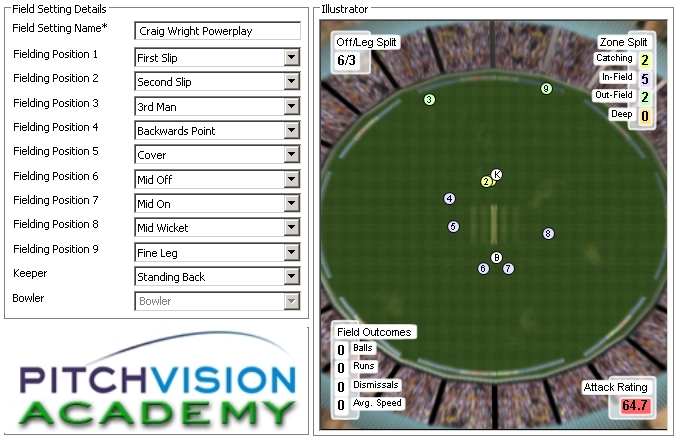Secrets of One Day Cricket Tactics from a Former International
Craig Wright, Scotland’s most capped player, captained over 100 times for his country. He is still captaining today with Watsonian CC.
When I was in Scotland I took the chance to examine his tactics and methods in the field and learn from someone with unrivalled experience as a skipper.
This is the blueprint of the limited over game against Grange CC.
How would you have managed the game as captain?
The game was a 50-over-a-side match played at Grange. The Scottish National Premier League rules dictated:
- 15 over powerplay with field restrictions of 2 outside the circle
- Duckworth-Lewis rain rules
- Free hits for front foot no balls
- 10 overs per bowler
The day was changeable with the sun out early but predictions of rain later. Locals told me a par score on the well-covered pitch was 250, although overnight rain caused a slow outfield.
After about 40 minutes of warm-up, Watsonian won the toss and chose to bowl for a 1pm start.
The decision made perfect sense to me. Statistically it’s easier to chase in limited over matches. Also, overnight rain usually gets the ball swinging and seaming early in the match. With 4 front-line seamers at their disposal ‘Sonians would hunt for early wickets.
First 15 overs (Powerplay)
Watsonian started with quick bowlers. 2 catchers were behind the bat as the new ball dictated plenty of bounce and carry. The keeper had no thoughts of standing up:

The bowlers looked to keep it slightly back of a length and - other than a few over pitched balls - Watsonian kept control early on. That meant the field was relatively unchanged with a couple of small variations:
- 2nd Slip went to gully
- Midwicket made it 2 slips and a gully when a wicket fell, with fine leg moving round almost at backward square leg.
- Throws were returned to the keeper regularly (although not every ball like in professional cricket).
- Fielders appeared a tight unit: they were backing each other up, chasing together and knew how each other operated. This gave an overall feeling of “squeezing”.
- Nobody was afraid to put in a dive, even the big fast bowlers.
Controlling the game in the field
The openers bowled all but 1 of the first 15 and you can understand why with the score on just 48-1.
It was a strong start, but the bat was being beaten regularly and Grange were lucky to be just a single wicket down.
It would be difficult to argue for any other tactic in the circumstances. Watsonians were in control with the Grange batsmen looking to hit over the top and tip-and-run to keep the scoreboard ticking.
To control the game fielding you have to balance competing aims. You are trying to bowl the opposition out for a low score, but you also need to protect key scoring areas. As the ball was coming though, a fine leg and third man with a ring field made sense.
At least 2 close catchers were kept in throughout the restrictions, with 3 for a couple of overs after the first wicket fell.
Towards the end of the field restrictions it was clear the bowlers were feeling the frustration of bowling well without getting wickets. Wright kept the team focused with a call of “Patience” from his position at slip. It reflected his previously stated aim of being the calming factor in a side of young, keen and occasionally excitable cricketers.
To give you a feel for the day, the standard and the opening overs, here’s a short video of the opening bowlers:
In part two we look at the tactics of the flexible middle overs Click here to go to part two now.
- Login to post comments

